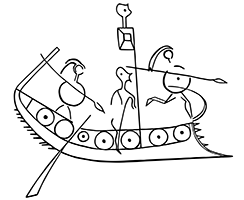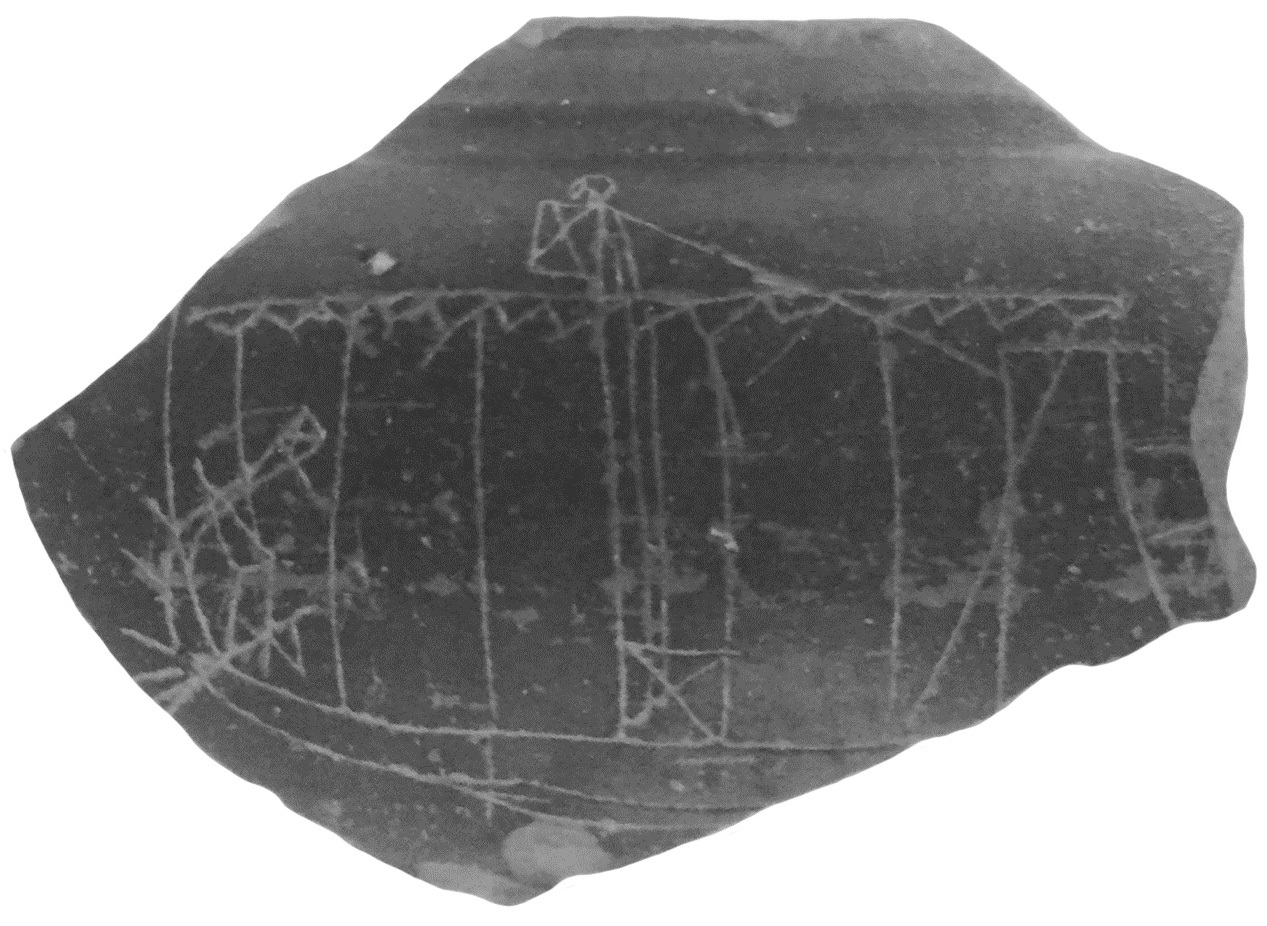Single levelled ship to the right with a low flat hull and an incurving sternpost. The bow section is missing. The sternpost rises vertically, then curves inward at a roughly 40o angle. Its width narrows slightly past the curve, then widens again into a square extremity which is demarcated with an X within a square. On the outer edge of the sternpost there are four evenly spaced short perpendicular strokes. The quarter rudder is rendered using an oblique stroke with two additional shorter strokes at its end to denote the oar blade. It has a triangle shaped tiller attached to it. The quarter rudder overlaps with a roughly rectangular shape which must be the aftercastle. The mast is amidships, which the artist has given some thickness by using two parallel strokes. It is encased within a mast step system which consists of a rectangle filled with an X. The bottom of the mast is shown reaching midway this box, near the center of the X rather than extending to the line denoting the gunwale. The yard is thin and straight, extending the entire length of the ship. The sail is furled, denoted by thirteen triangles below the yard, from which hang eight evenly spaced brails, four fore and aft. Most of these brails hang vertically, except for the last two on the right. The two closest to the mast on either side appear attached to the mast step system. At the top of the mast above the yard is a crow's nest, depicted by what appears to be the head of a figure, with a square filled with an X attached right beneath it on the left side of the mast. There are few lines more difficult to interpret. The first one is a straight vertical stroke from the base of the inner edge of the sternpost to the yard (1). It does not touch the tip of the yard and continues up to the sherd's edge. It is possible that this is another brail as it nearly touches the yard. This possibility is strengthened by the fact that there is a brail near the other extremity of the yard and that the artist appears to have executed the rigging in a more or less symmetrical manner. The second puzzling element resembles an inverted L capped by a vertical stroke near the bow section of the vessel (2). It is overly high to be a forecastle as it nearly reaches to the furled sail, yet there is an oblique line running from the top of the mast to it which appears to be a forestay.
Graffito of a galley
A48
second half of the 8th century B.C. (Late Geometric)
Eretria (unspecified)
Black slip geometric skyphos
Andreiomenou 1983: 185, 234, fig. 10, pl. 64; Verdan 2006: 97, 101-102, fig. 6
The vessel is remarkably detailed and overall clearly executed despite the schematic nature of the medium. Ichnographically, it is much closer to ship representations on fibulae rather than pictorial pottery, where the crow's nest and mast step system tends to be depicted whereas both are very rare for pottery. The depiction of the furled sail however appears to be a characteristic of Euboean ship depictions, since two other pictorial examples have it as well.
Andreiomenou Α. 1983. “Γεωµετρική και υπογεωµετρική κεραµεική εξ Ερετρίας V,” AE 122: 161–192.
Verdan, S. 2006. “Un nouveau navire géométrique à Erétrie,” AntK 49: 97–106.




